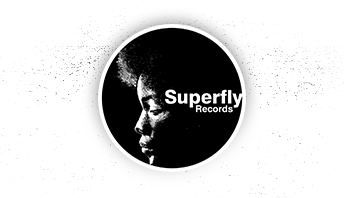


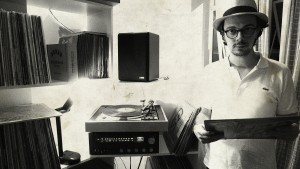
Each month, we are focusing on a record label founded by an active digger. This month, Frederic Thiphagne, the soul ((with Matthieu Hébrard) behind the Sao Paulo based Goma Gringa label which recently reissued the infamous Tribo Masahi LP but is also well-known for spreading the works of highly-acclaimed new acts such as Meta Meta and Thiago Franca.
When did you start digging records?
I first started buying cassettes and CDs as a kid/teenager around 1995. I was looking for French Hip Hop like IAM, NTM, Oxmo Puccino, etc… I now regret I did not buy those on vinyl from the start! Then I spent some time listening to UK Big Beat. I remember very well of those Future Sound of UK compilations, Freestylers, Lo-Fidelity All Stars, Propellerheads, Chemical Brothers, etc… I quickly got back to Hip Hop and started buying vinyl records. I guess it was in he early 2000s.
What Lps did you buy at first? Do you still listen to them?
I was buying almost exclusively Hip Hop or Hip Hop related stuff. Classic 90’s Hip Hop and Turntabilist/Electro like Quantum Projects, Ninja Tune releases, etc… I cannot really remember what was the very first LP I bought but I can remember very well of that trip I made to Amsterdam with my good friend Remy. I was doing BMX Flatland and there was a very important competition happening in Amsterdam. So we went there by bus and checked the record stores! I can still feel how exited I was when I first entered the Fat Beats shop! They had everything I was looking for! But the 2 LPs I still have and still listen to from time to time were ‘O.S.T.’ by People Under The Stairs and ‘Bombay The Hard Way’ by Dan the Automator and DJ Shadow.
Do you have a particular style or favourite period?
I try not to have any boundaries since I believe that every single musical style/period has great stuff to be listened to. Yet, I am currently very much into 50s and early 60s recordings, especially from the French West Indies and Brazil. I am digging a lot into 78rpm! I love them! I deeply love the way those recordings sound, the voices, the horns. It is the only music that really relaxes me at night, with a glass of wine or a fresh beer after a good day of work. Actually, It also works with Jazz and African music‚ but right now I am really into those 50’s sound!
Since you made a move to Sao Paulo, are you still digging, buying vinyl, visiting record shops?
Yes of course! I mean, when work gives me enough time to do so!
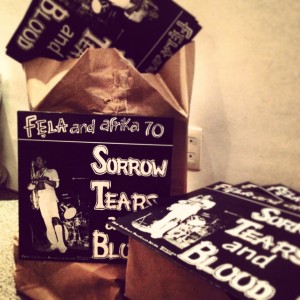
Why did you create Goma Gringa Discos? What was your first release?
Well, the point is that when I arrived in Sao Paulo, contemporary record labels like Jazzman, Soundway, Analog Africa were absolutely not represented here. You couldn’t find any releases from those labels. So I started importing them and created Goma Gringa. I quickly met Matthieu who told me of his wish to eventually enter the business. We became partners and created the label together. Then we realized that instead of racking our brains with import red tape (It is really complicate to import goods to Brazil), we should build a record label and press records here instead of importing them. Everything stemmed from that idea! Then we quickly wanted to make our own record instead of simple replicas of what was being released in Europe. Six months later we released our first LP, the extended version of Fela Kuti’s ‘Sorrow, Tears and Blood’!
Why did you choose this name : Goma Gringa Discos?
That name appeared while I was importing records. Goma laca is the name given to the material used for 78rpm records. So the word “Goma” refers to records. And “Gringo” is the “popular” word for foreigner. The combination of both words represented not only my character but also the records I was dealing with since they were being imported. The funny thing is that “Goma” in Brazilian Portuguese can also mean “Home” : “Vem pra goma!” means “Come home”! And I was selling my records mainly from home so it was still matching! When it turned into a label, we decided to keep that name.
What could be your editorial/aesthetic line?
We opened the label with 2 editorial lines. We now have 3 which are the African music from the 60’s/70’s, the Brazilian contemporary music and reissues of Brazilian music from the 60’s and 70’s.
How do you decide on the choice of reissues/issues? For instance The Fela and Poly-Rytmo LPs?
Well, we wanted to have as a first release an African LP. Since Fela is very-well considered here it was the best starting point we could have dreamt of! Then we made the Poly-Rythmo record which is actually a compilation of Analog Africa compilations. This project is the perfect illustration of what we intended to do in Brazil; Brazilian versions of European label releases.
Could you tell us more about the story behind Tribo Massahi : how did you discover it? Who are they? Are they still alive?
From what we have found until now, only one musician is still alive, the guitarist Ruy Barbosa. Embaixador has unfortunately passed away on the 27th of December 1996. They were a band like any other I would say. I mean, they have that very specific sound to them but apart from that, they were like any other band, playing and looking for more gigs! There was a lot of urban legends around this record, like for example that they were a band of Nigerian musicians that Embaixador would have met some night and that they would had gone to a studio and spent the night there, getting high and finally recording a one take record. None of those stories are true. If you want to know the truth, the easiest way is to grab a copy!
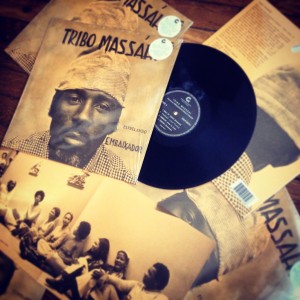
Where do you place them within your catalogue? In the middle, between your Afro Tropism and your Brazilian moods?
Yes, It’s an Afro-Brazilian record. It links both continents. So It was a perfect start to open that Brazilian reissue series!
What is the best deal/business: to make reissues or to produce/coproduce new records?
I think that there is no best deal when you talk about an independent record label. What moves us in the very first place is the love of music and some kind of necessity to make things happen! For us at Goma Gringa, every single penny won is reinvested in the label and in new projects. Mathieu is working as a teacher and myself as a Designer/Art Director.
How do you find brand new talents? On the internet? On stage? Through friends?
I guess like everyone, by being curious. But we have the chance to be surrounded by the amazing Sao Paulo music scene. The musicians are all friends and work with each other. Every single project is great and interesting! I am talking about Meta Meta (Kiko Dinucci, Juara Marcal and Thiago Franca), Rodrigo Campos, Romulo Fres, Marcelo Cabral, Gui Amabis, etc… They are all amazing musicians and singers! We sincerely feel blessed to evolve with them and release their records!
You have released records by Meta Meta and their saxophonist Thiago Franca. What do they represent within the Brazilian scene? How would you explain their success in Europe?
Well everyone calls them the new Sao Paulo Avant Garde scene. It is a bit pretentious, and I don’t think that they really like to be named like this. But that is what they actually are! I mean, a new scene, a new generation of musicians, connected to one another and producing their very own music, without copying what is happening here and there. And since they are all excellent musicians, singers, composers, etc, the result is a very unique sound, very genuine music. Their music! I mean, you cannot find the Meta Meta sound anywhere else. It is just them! And it is incredibly good, deep, beautiful and honest. They deeply are what they play. I guess that is why they are now finding success both in Brazil and in Europe.
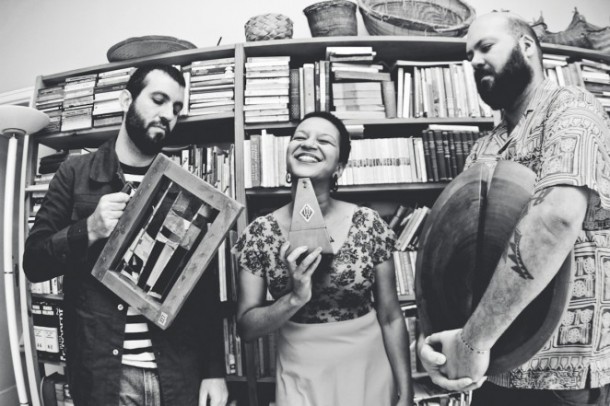
Meta Meta trio: Kiko Dinucci, Juçara Marcal and Thiago Franca
What is the most exciting part when being given an artwork job? How do you go about it? What is your most accomplished project in that aspect?
To think of it along with the graphic production. Printing process, paper, finishing, etc… That is what excites me the most nowadays! And that is a space where I getting lot of satisfaction. I am a former photographer. I have always had one foot in music and the other in image, trying to make both meet. So all this graphic production part is a real pleasure to me! I am happy with all our projects, except maybe for Fela. It was nice but could have been better. It was our first project, no problem!
There are two things I am particularly proud of. First is to have been able to produce hard-cardboard paste-one covers here in Brazil. The first we did was Thiago Franca’s ‘Malagueta, Perus e Bacana’ LP. He really looks gorgeous and it is the first cover of that type to be produced in Brazil in 50 years! Now we even have several versions of that hard-cardboard cover!The other project is the Poly-Rythmo cover! That one was mad! 100% typographic print! Which means mounting letter by letter each word, each element of the cover using the exact same technics that were used in the 60s and 70s. We decided to do this for 2 reasons, first because I had just discovered those LetterPress techniques so I was eager to work with that and because I had as a graphic reference a Poly Rythmo 7 inch printed using that same technique. We did everything! Mounting the types, we made what we called a ‘cliché’ to print the picture and we even input the text on the back cover with Linotype! Probably the last machine still having a commercial activity in Sao Paulo… That was so great! This machine is like the very first Twitter. It produces lines of text. So, in the early 20th century, when it first appeared, it was a revolution within the newspaper world! From “line per hour” the speed moved to “line per minute”. So everything got way faster! It then allowed newspapers to have morning and evening editions. Back in those days, the New York Times had 400 of those machines! So, yes, this project was so great and so cool and the result is really quite unique!
What could be the label’s leitmotif?
Well, our logo is Goma Gringa Discos “musica com sotaque” which means “Music with accent”. So I guess this is quite our leitmotif since we are looking for good music with a special foreign touch, that special accent that make it unique.
Have you received many negative answers on some of the LPs you were trying to reissue?
Actually, we have the chance of living in Brazil, where none of those contemporary labels are available. So we do not represent any kind of competitive threat to anyone. This helped us a lot! That is basically why we were able to release the Fela or Poly-Rythmo LPs. Actually, the only negative answer we have received so far was for a record controlled by Universal who don’t license to anybody. A pity since they barely one third of the titles they control.
There are more and more reissues of old LPs, and more and more record labels (major or indie) now release their new artists on LP, or EP. Do you think that the LP reissue market could ever reach saturation point?
No, I don’t think so. There are more and more reissue and record labels also because there are more and more buyers. I think that there are several niches inside the niche market of vinyl records. I think It’s good and important that the music is being made available on vinyl again. And that goes from super classics to rare obscure and special records.
What are your next releases?
Many contemporary Brazilian records planned. The new Thiago Franca has just been released. Then we have Juçara Marçal’s ‘Encarnado’ and the new Rodrigo Campos planned! For the rest, you will have to stay tuned!
What is the LP you dream of reissuing?
Ahaha! I will let you know when I will have signed and ready to be re-issued! I don’t know, maybe a French West Indies compilation of the early recordings done there (late 50’s/60’s). That would be really cool…
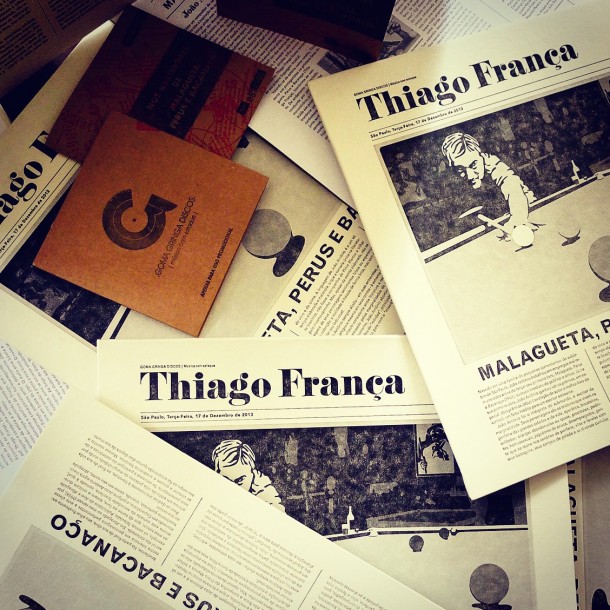
Chapeau á Goma Gringa, tres beau label !!